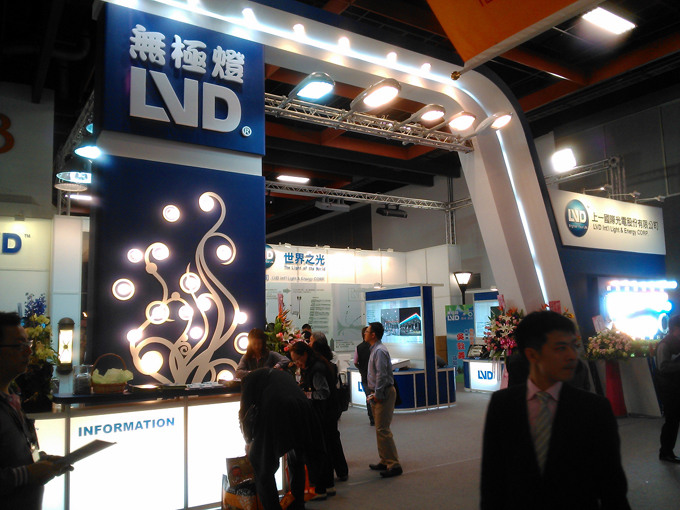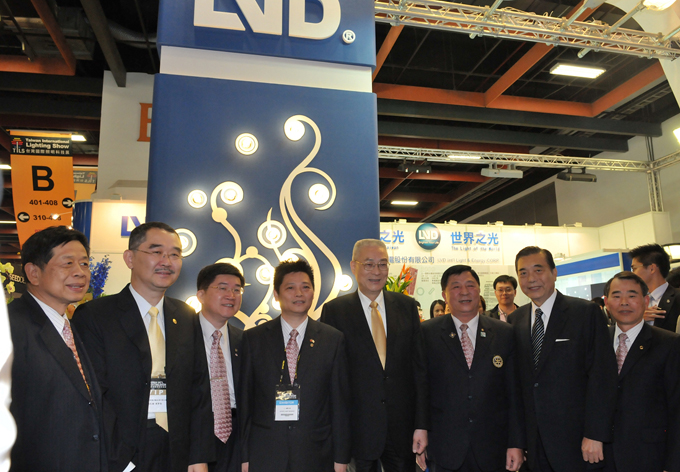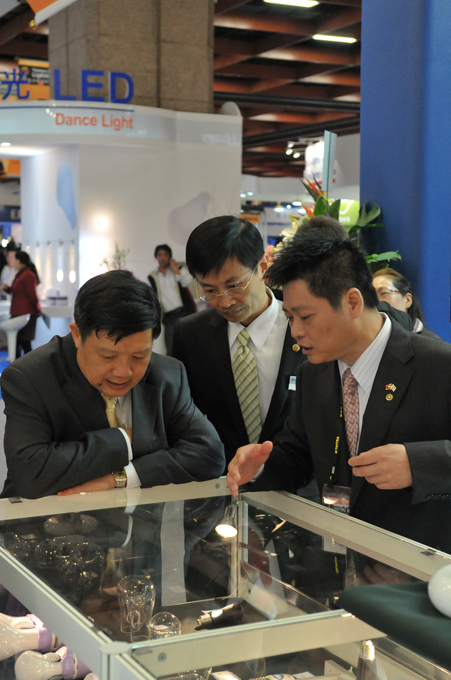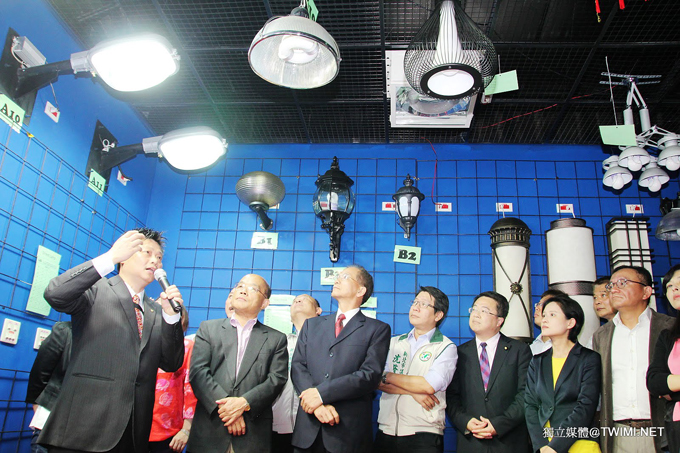LVD Lamps: Light Without Much Heat over a Wide Range of Uses
The publishing of national standards for induction lamps last year marked a milestone in the industry's development
2013/05/30 | By Ken LiuInterview with Jack Chen, general manager of LVD International Light & Energy Corp.
LVDs and LEDs have many similarities; their initials are different in only one letter, both are members of the new generation of lighting, and both offer green-lighting advantages such as energy conservation, carbon reduction, high power factor, low lumen depreciation, minimal power wastage, flicker-free performance, and long lifespan. But there are also huge differences between the two types of lighting. LVD is the name of a single maker of induction lamps, LVD International Light & Energy Corp., while LED is an acronym for light-emitting diode, a general term for third generation lighting.
Induction lamps are also known as electrode-less discharge lamps or electrode-less lamps. When discussing the development of induction lamps, Jack Chen, LVD International's general manager, pointed out that the American electrical engineer Nikola Tesla and the German Johann Hittorf started researching electrode-less light sources in 1884 and 10 years later first proved that plasma in a high-frequency magnetic field can produce light. Further research was later carried out in the United States, Europe, and the Soviet Union, and mass production began in 1994 by two international lighting companies, Philips and Osram.

Chen mentioned that induction lamps had already proven to be a practical source of light back in the 1960s. Since these lamps have no electrodes, they do not have the problem faced by traditional light bulbs, the electrodes of which burn out and necessitate their replacement. Induction lamps, therefore, last about 100 times as long as incandescent bulbs.
Back in the 1960s, however, the consciousness of the need to save energy and reduce carbon was weak, and little attention was given to the high efficiency and energy-saving performance of induction lamps. Also, lighting companies were reluctant to produce lamps that lasted so long and had to be replaced so rarely, and were therefore less “profitable” to make than incandescent bulbs.
The time when Philips and Osram began producing induction lamps in 1994 was also about the time that people began paying more attention to environmental issues. Chen observed that three events in the early years of the 21st century deepened mankind's sense of urgency about protecting the planet's resources, resulting in a change of attitudes and life values: the South Asian tsunami of 2004, the energy crisis of 2005, and the international financial crisis of 2008. Since that time energy conservation has become a mainstream value, and this has naturally contributed to the popularization of energy-saving lighting.
Advantages
LVD International was founded in 2006 as one of a handful of Taiwanese companies engaged in the development and manufacturing of induction lamps. At that time the LED industry was barely getting started, so the similarity of the company's name with the acronym “LED” is purely coincidental. Chen suggested that there is still no universally accepted term for induction lamps, in either English or Chinese; the name of his company, LVD, stands for “light for various dimensions,” a reflection of the idea that induction lamps can be used in a broad range of applications such as engineering sites, factories, offices, shopping plazas, homes, and even vehicles. The name also implies that induction lamps are an omni-directional light source that provides 360 degrees of illumination with no blind angles.

One striking advantage of induction lamps is that they don't produce much heat, thereby eliminating the problem of heat dissipation that plagues LEDs. Electrode-less lamps, Chen noted, emit light through the principle of electromagnetic induction and gas discharge. They have a simple structure with just three components: lamp, magnetic ring, and ballast. Because of the simplicity of their structure, they are inexpensive to make, so their prices are much lower than those of LED lamps; they are comparable, in fact, to the prices of traditional energy-saving bulbs.
National Standards
Because of these attractions, Chen has a strong affection for induction lamps and has dedicated years of his life to their development. His company has obtained over 100 patents for induction lamp technology and design. Meanwhile, he helped the government to formulate national product standards for them, and the publication of the Chinese National Standards (CNS) in 2012 was a seminal event for Taiwan's induction lamp industry.
Chen commented that although energy conservation and carbon reduction have become the trends of the times, many consumers still do not know enough about “green lighting” and are at a loss when buying lighting products. With the publication of national standards for them, induction lamps can now bear the CNS mark assuring consumers of their quality and safety.
Chen claimed that induction lamps are far ahead of their LED equivalents, and noted that Taiwan has about 800 manufacturers of LED lighting, almost all of them with their own patented technology. This makes it difficult for government officials to analyze the features of each technology and work out uniform national standards for them.
LVD International has also obtained a number of international certifications for its products, including CE, FCC, RoHS, TCB, CCC, PSE, TUV, UL, and CB. Chen pointed out that energy-conservation consciousness is very strong among Japanese consumers, especially following the Fukushima nuclear disaster, and that PSE certification will ease entry into Japan for his products.
Japan is, in fact, already the company's main export market, and to expand its territory there it plans to set up a factory in Fukuoka Prefecture. For this, Hiroshi Ogawa, governor of Fukuoka Prefecture, led a team to visit LVD International earlier this year. Chen expects the investment plan to be finalized and implemented by the end of the year.

At the moment, Chen lamented, the public seems to be unfamiliar with induction lamps, and most users of such lighting are people who have a certain amount of knowledge in the field. These users include Taipei international airport, Taipei water department, CPC Corporation gas stations, National Taiwan Normal University gymnasium, National Taiwan University, China Steel, Formosa Group, Taiwan Power Company, the Grand Hotel of Taiwan, and Taipei World Trade Center. But while the general manager strongly approves of the promotion of green lighting by governments around the world, his support does not extend to the banning of incandescent bulbs.
All kinds of lighting, he explained, have their pros and cons, and the incandescent bulb invented by Thomas Edison has advantages that other kinds of artificial lighting cannot match. He believes, therefore, that it is wrong to wipe them out of circulation.
Chen expressed impartial attitude as he speak.




